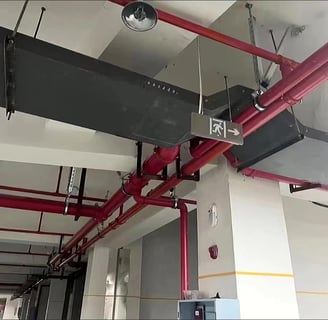Introduction to Strut Channels: Construction and Application
Learn about the construction, design, and applications of strut channels in the construction and electrical industries. Discover the benefits of using traditional metal or advanced fiberglass for r...
7/17/20241 min read


Introduction to Strut Channels
Strut channels are a standardized structural system widely used in the construction and electrical industries. Known for their versatility, strut channels provide lightweight structural support for various applications including the support of wires, pipes, and mechanical components such as air conditioning or ventilation systems. This blog post delves into the key aspects of strut channels, their construction, and their applications.
Construction and Design of Strut Channels
Typically made from metal sheets, strut channels are folded into the shape of an open channel. One of the unique features of strut channels is the inward-curved lip, which not only adds additional rigidity but also serves as a mounting location for connecting components. This design ensures that strut channels can bear significant loads, making them suitable for various structural applications.
In recent years, there has been a shift towards using fiberglass as the material of choice for strut channels. Fiberglass offers a range of benefits, including high corrosion resistance, lightweight properties, and exceptional strength. These attributes make fiberglass strut channels ideal for environments where metal channels would be prone to rust and degradation.
Applications of Strut Channels
Strut channels are incredibly versatile and find applications in numerous fields. In construction, they are used to create frameworks that support ceilings, walls, and floors. Their ability to support electrical wiring and plumbing infrastructure makes them indispensable in both residential and commercial buildings. Additionally, strut channels are extensively used in HVAC systems to support air conditioning and ventilation units.
Another significant advantage of strut channels is their adaptability. They usually have holes at the bottom, which facilitate easy interconnection and fixing to pillars or other structures. This feature allows for quick and efficient installation, saving time and labor costs in large-scale projects.
Conclusion
Strut channels play a crucial role in modern construction and electrical industries due to their structural integrity and versatility. Whether made of traditional metal or advanced fiberglass, strut channels offer reliable support for various applications. Understanding the design and benefits of strut channels can help professionals choose the right type for their specific needs, ensuring efficient and durable installations.
Songyin Kunshen
上海松隐坤申贸易有限公司
Advancing support bracket management technologies for a sustainable future.
Contact
86 021 5738 0557
86 199 2112 0262
© 2024. All rights reserved.


